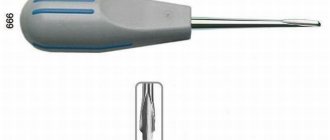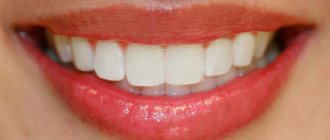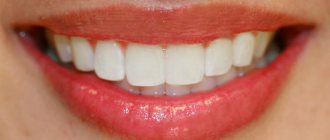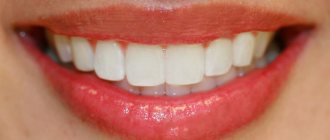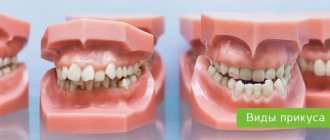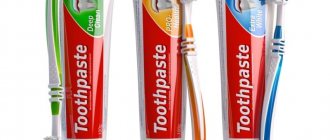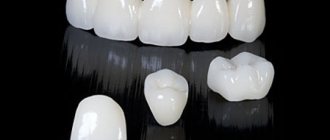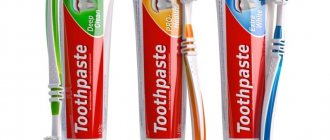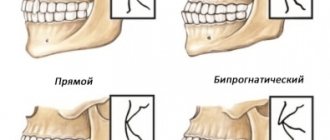Forceps
When removing teeth with forceps, the lever method is used. Such instruments consist of cheeks, a lock and handles:
- The cheeks are the part that secures the crown of the tooth being removed.
- Handles (handles) are the part by which the doctor holds the forceps in his hand.
- The lock is the junction of the handles and cheeks.
All forceps differ in their design - it depends on the anatomy and location of the tooth being removed in the oral cavity.
To remove lower teeth
- Beak forceps - used to remove teeth with a retained crown and, in some cases, roots in the lower jaw. Their feature is the perpendicular arrangement of the cheeks in relation to the handle. Beak-shaped forceps can have non-converging or converging cheeks.
- For the lower eighth teeth – used when the patient’s mouth opening is limited or to remove lower wisdom teeth. They have cheeks curved in a horizontal plane.
To remove upper teeth
- Bayonet-shaped (bayonet) - also called universal, since they can remove almost any tooth or root of the upper jaw. Depending on the width of the cheeks, they can be narrow, medium or wide. By design, bayonet-shaped pliers have handles and cheeks parallel to the axis.
- Direct – used to remove permanent and primary teeth of the anterior group. The handles and the working part are located on the same line.
- S-shaped forceps - for removing chewing teeth of the upper jaw. They have an S-shaped bend and their cheeks do not close together. There are S-shaped forceps for molars and for premolars. For molars, in turn, there are right or left (designed to remove the right or left upper molar, respectively). One cheek of such forceps is rounded at the end, the other ends with a spike, which during removal must be placed between the buccal roots of the sixth and seventh teeth.
- For the upper eighth teeth - special forceps designed to remove the upper wisdom teeth. The longitudinal axis of the handles and the axis of the cheeks are parallel, there is a transition part. Both cheeks are wide, rounded at the end, the inner surface has indentations. When closed, such forceps do not converge; they are conveniently inserted deep into the oral cavity, while the lower teeth do not interfere with the extraction procedure.
Beak-shaped forceps with converging cheeks
Beak-shaped forceps with spikes
Lecluse elevator
Bayonet pliers
031. When packing the hole, the iodoform turunda is removed:
****Answer: 2
1) on day 2
2) on day 5-7
3) on day 12-14
4) in three weeks
5) in a month
032. When removing the eighth tooth in the lower jaw, it is recommended to use a bayonet elevator in the following condition of the dentition:
****Answer: 5
1) absence of the 7th tooth
2) absence of the 6th tooth
3) III degree mobility of teeth 6 and 7
4) pathological mobility 5, 6, 7
5) the presence of stable 6 and 7
033. To remove severed roots 3.7 apply:
****Answer: 1
1) corner elevator
2) S-shaped tongs
3) bayonet elevator
4) straight tongs
5) beak-shaped forceps
034. Complications that arise during tooth extraction surgery include:
****Answer: 3
1) sinusitis
2) alveolitis
3) dislocation of an adjacent tooth
4) periostitis of the jaw
5) osteomyelitis
035. Complications that arise during tooth extraction surgery include:
****Answer: 4
1) trigeminal neuralgia
2) arthritis of the temporomandibular joint
3) mumps
4) alveolar bleeding
5) alveolitis
036.After a complex extraction of 4.8 teeth, the patient should be prescribed:
****Answer: 1
1) cold on the area of the angle of the lower jaw
2) heat compress
3) compress with Vishnevsky ointment
4) compress with Vaseline
5) physical therapy
037.The local cause of bleeding after tooth extraction is:
****Answer: 2
1) blood clotting disorder
2) soft tissue injury
3) high blood pressure
4) chronic glomerulonephritis
5) anaphylactic shock
038. The way to stop bleeding from the depths of the socket is:
****Answer: 3
1) application of potassium permanganate crystals
2) tamponade of the socket mouth
3) tight tamponade of the hole
4) suturing the wound
5) application of a hemostatic sponge
039. A common cause of bleeding after tooth extraction is:
****Answer: 3
1) acute inflammatory process in bone tissue
2) gum rupture
3) hemophilia
4) fracture of the alveolar edge
5) sinusitis
040.Possible local complication when removing teeth on the upper jaw:
****Answer: 1
1) perforation of the maxillary sinus
2) fracture of the condylar process
3) fainting
4) numbness of the lower lip
5) collapse
041. Local complication after tooth extraction surgery is:
****Answer: 2
1) tooth root fracture
2) alveolitis of the socket
3) mumps
4) anaphylactic shock
5) collapse
042. A local complication during tooth extraction surgery is:
****Answer: 1
1) fracture of the crown or root of a tooth
2) alveolitis
3) osteomyelitis of the socket
4) mumps
5) arthritis of the temporomandibular joint
043. When pushing the root into the maxillary sinus, the doctor’s erroneous action is:
****Answer: 1
1) root removal through the hole
2) applying an iodoform swab to the mouth of the hole
3) fixation of the tampon at the mouth of the hole
4) root removal in a hospital
5) oronasal test
044. Most often, displacement of teeth into the thickness of soft tissue occurs during removal of:
****Answer: 2
1) 2.4 and 1.4
And 4.8
And 4.6
And 2.8
And 2.1
045. A fracture of the tubercle of the upper jaw can occur during tooth extraction:
****Answer: 4
1) 1.1 and 2.1
And 2.3
And 4.4
And 1.8
And 4.5
046. A common cause of prolonged bleeding from the socket is:
****Answer: 1
1) acute leukemia
2) fragmentation of part of the alveoli
3) gum injury
4) acute inflammatory process
5) neuralgia
047. A sign of opening of the bottom of the maxillary sinus is:
****Answer: 4
1) bleeding from the socket of an extracted tooth
2) discharge of pus from the socket of an extracted tooth
3) nosebleeds
4) positive oral nasal test
5) soft tissue swelling
048. The local cause of bleeding from the depths of the socket is:
****Answer: 4
1) hemophilia
2) taking anticoagulants
3) hypertension
4) injury to the inferior alveolar artery
5) fainting
049. When opening the bottom of the maxillary sinus, the following should be done:
****Answer: 2
1) tight tamponade of the socket
2) cover the mouth of the hole with iodoform turunda for a period of 5-7 days
3) loose tamponade of the socket with iodoform turunda for a period of 2 days
4) suturing the perforation with a trapezoidal flap
5) conduction anesthesia
050. When pushing the root of a tooth into the maxillary sinus, you should:
****Answer: 4
1) try to remove it through the hole
2) make a tight tamponade of the hole
3) prescribe physiotherapeutic treatment
4) send the patient to the hospital
5) perform infiltration anesthesia
051. Most often, a fracture of the lower jaw occurs during tooth extraction.
****Answer: 3
1) 3.5 or 4.5
Or 3.4
Or 4.8
Or 4.2
Or 4.1
052. Perforation of the bottom of the maxillary sinus is most likely during tooth extraction:
****Answer: 3
1) 1.2, 2.2, 1.1, 2.1
2) 2.3, 1.3, 2.4, 1.4
3) 1.6, 2.6, 1.7, 2.7
4) 1.8, 2.8, 3.8, 4.8
5) 4.5, 3.5, 4.4, 3.4
053. A fracture of the lower jaw is more likely when working with tools:
****Answer: 2
1) beak-shaped forceps without spines
2) Lecluse elevator
3) beak-shaped forceps with spines
4) corner elevator “from yourself”
5) straight tongs
054. The local cause of bleeding from the socket is:
****Answer: 2
1) high blood pressure
2) fracture of the interradicular septum
3) soft tissue rupture
4) root fracture
5) sharp edges of the hole
055.In case of bleeding from the bottom of the hole, the following should be done:
****Answer: 1
1) tight tamponade of the socket with iodoform turunda
2) tamponade of the socket mouth with iodoform turunda
3) removal of the interradicular septum
4) application of a hemostatic sponge to the mouth of the socket
5) conduction anesthesia
056.For alveolitis, on the first visit you should do:
****Answer: 4
1) tight tamponade of the socket with iodoform turunda
2) curettage of the hole
3) incision along the transitional fold
4) remove the disintegrated clot and loosely introduce iodoform turunda into the hole
5) local anesthesia
057. To stop bleeding from the walls of the hole:
****Answer: 5
1) tamponade with iodoform turunda
2) prescription of antihypertensive therapy
3) blood transfusion
4) urgent hospitalization of the patient
5) compression of the bleeding area of the bone
058. To stop bleeding in case of soft tissue damage, use:
****Answer: 2
1) blood transfusion
2) suturing the wound
3) general hemostatic therapy
4) anticoagulants intravenously
5) local anesthesia
059. When opening the bottom of the maxillary sinus, the following is carried out:
****Answer: 2
1) rinsing with an antiseptic solution
2) suturing with a flap
3) tight tamponade of the hole
4) application of antibiotics
5) curettage of the maxillary sinus
060In case of a root fracture, the doctor’s wrong action is:
****Answer: 4
1) complete root removal
2) leaving a root fragment in the hole
3) removal of granulation tissue
4) smoothing the sharp edge of the bone
5) repeat surgery after 7-10 days
061. Local long-term complications after tooth extraction include:
****Answer: 4
1) hypertensive crisis
2) dislocation of the temporomandibular joint
3) fainting
4) osteomyelitis of the socket
5) collapse
062. When pushing the tooth root into the posterior parts of the hyoid region during the removal of 3.8 and 4.8, the following is performed:
****Answer: 4
1) dissection of soft tissue above the root
2) detachment of the mucoperiosteal flap
3) suturing the tooth socket
4) hospitalization of the patient
5) local anesthesia
063. Complications that arise during the removal of the eighth tooth of the upper jaw include:
****Answer: 1
1) fracture of the tubercle of the upper jaw
2) neuritis of the nasopalatine nerve
3) osteomyelitis of the socket
4) sinusitis
5) arthritis
064. In case of gum rupture during tooth extraction surgery, the following is indicated:
****Answer: 2
1) wound packing
2) suturing the gum
3) treatment of the wound surface with 1% iodine solution
4) application with epithelializing agents
5) diathermocoagulation
065. Dislocation of the lower jaw is possible during tooth extraction:
****Answer: 4
1) 2.4, 1.4
2) 1.3, 2.3
3) 4.1, 3,1
4) 4.7, 3.7
5) 2.1, 1.1
Elevators
When removing a tooth using an elevator, the principle of leverage is also used. The elevator consists of:
- Working part
- Handles
- Connecting rod
All elevators are divided into straight (wide, medium, narrow - depending on the width of the working part) and angular (toward, away from you). On one side the working part is convex, on the other side there is a “groove”. During removal, the concave part (“groove”) is directed towards the root, and the convex side is directed towards the wall of the hole.
The straight elevator is used to remove the roots of single-rooted teeth or severed roots of multi-rooted teeth in both the upper and lower jaws. Angle elevators are used when removing the roots of the lower chewing teeth.
Signs of forceps
A sign of the width of the cheeks . Forceps with a cheek width of more than 0.75 cm are intended for removing molars, i.e. teeth with wide crowns, and forceps with narrow cheeks (less than 0.75 cm wide) are used to remove teeth with a narrow crown (incisors, canines, premolars, roots).
Form sign . Most forceps can be used to remove teeth on the right or left side; their cheeks are the same sharp or rounded. At the same time, to remove upper molars that have two buccal roots, the forceps are selected in such a way that the cheek with the pointed end is facing the vestibular side so that the pointed end of the cheek fits between the two buccal roots and tightly fixes the crown.
Sign of the angle of the forceps for tooth extraction: 1-3 - upper jaw; 4 - lower jaw
Thus, there are forceps for removing teeth on the right and left sides. A sign of the bend and length of the forceps . The length of the handles and cheeks of the forceps depends on the location of the teeth. So, to remove the upper incisors and canines, straight forceps with short cheeks are used (Fig. 5-5). Special S-shaped forceps are used to remove upper premolars and molars. If there is a spike on the vestibular side, they are used to remove molars, and without a spike - for premolars. Special forceps with slightly elongated converging cheeks and jaws, shaped like a bayonet, are called bayonet-shaped, or bayonet (from the French “bayonet” - bayonet). These forceps are designed to remove the roots of maxillary molars. In clinical practice, these forceps can be used to remove the roots of all teeth in the upper jaw. In addition, bayonet forceps, if necessary, can be used to remove the roots of the incisors and canines of the lower jaw. That's why bayonet pliers are also called universal pliers.
The upper third molars are removed using bayonet forceps with longer and more curved cheeks.
Forceps for removing teeth and tooth roots on the upper jaw ; 1 - for removing incisors and canines; 2 - for removing premolars; 3 - universal; 4 - for removing molars; 5 - for removing third molars
When removing teeth from the lower jaw, beak-shaped forceps are used, curved along the edge (with converging and non-converging ends of the cheeks). These forceps are mainly used to remove anterior teeth and premolars. Molars, especially third ones, are removed using forceps curved along a plane. The same forceps are used to remove molars of the lower jaw with limited mouth opening. The roots of all teeth in the lower jaw are removed using beak-shaped forceps with converging ends of the cheeks.
Drill
Sawing teeth using a drill is an alternative to chiseling and hammering out teeth. Both straight and turbine handpieces are used.
A straight tip (ball-shaped bur) is used to remove bone tissue that is overhanging or interfering with tooth extraction. A turbine tip (fissure burs) is most often used for sawing a tooth into several parts: separating the crown from the roots, separating the roots in order to remove them later separately.
It is necessary to remind you that when operating the drill, you must use water cooling.
We advise you to read: Tactics regarding primary teeth in adult patients
Bayonet forceps
Bayonet-shaped forceps are divided into narrow, wide, and medium based on the width of the cheeks. These forceps are used to remove the teeth of the upper jaw, namely:
• teeth destroyed by crowns
• roots of teeth.
To remove the upper eighth teeth, forceps similar to bayonet-shaped ones are used, but the main feature is the presence of non-closing cheeks located below.
For the lower jaw, beak-shaped forceps are used. They have cheeks perpendicular to the axes of the handles. These forceps are universal - they are used to remove all teeth of the lower jaw, including their roots. To remove lower molars, forceps curved along a plane are used.
